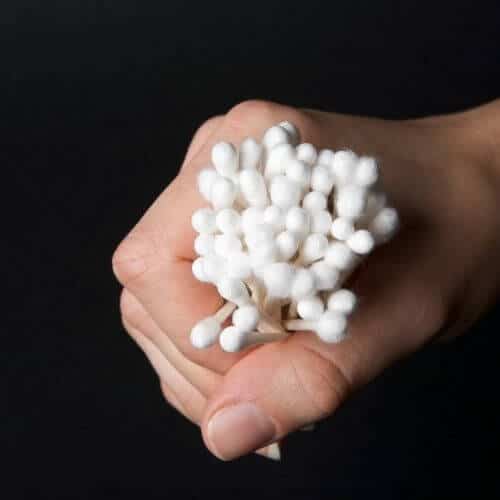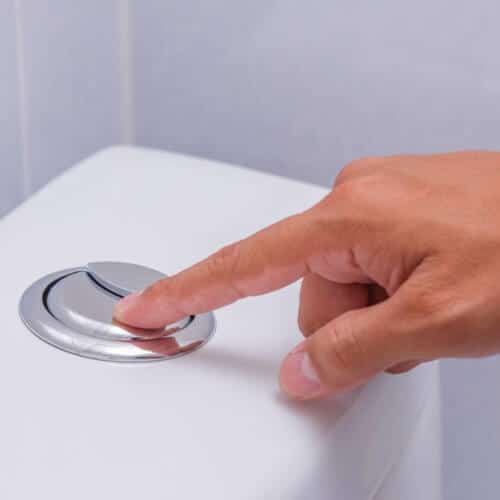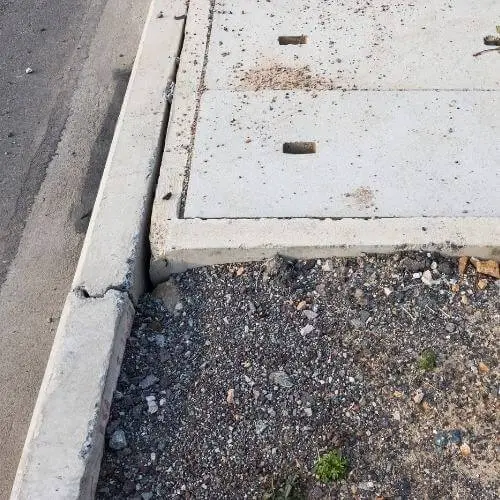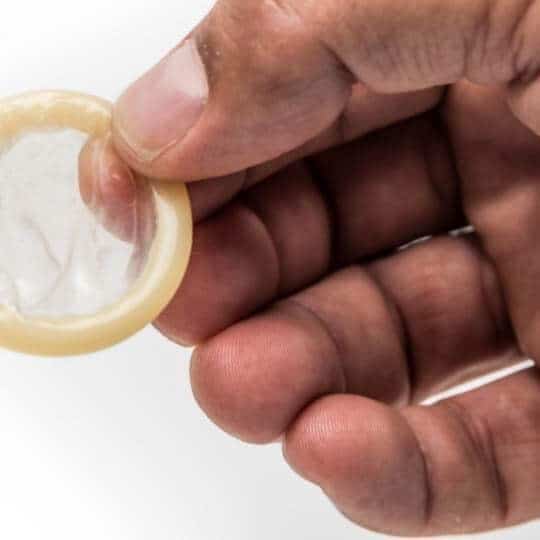If you too are using Q-tips on a regular basis, you are probably wondering “Can you flush Q-tips down the toilet?” And if you do that, is it such a bad thing? What can happen if you flush one of these items down the toilet? The answers to these questions and much more can be found in this post.
Q-tips are a common hygiene product found in the bathroom of almost every American household. They serve multiple purposes and are affordable, so people buy them in large quantities.
What are Q-tips and what are they made of?

Q-tips is a common name for cotton swabs, but not all cotton swabs are Q-tips.
Q-tips is a registered trademark of Unilever and you can use this name only to refer to that specific product.
Cotton swabs or cotton buds are hygiene items consisting of two small wads of cotton wrapped around a short rod. The rod or the longer part of this product can be made from different materials:
- Rolled paper
- Wood
- Plastic
The plastic stemmed ones have been banned by some countries in the last years due to concerns about pollution. As a result, we now see more Q-tips with wood or paper rods, which are biodegradable.
Q-tips have a variety of uses, including:
- Ear cleaning (although not recommended by physicians);
- Applying and removing makeup;
- Cleaning various objects with intricate details;
- Arts and crafts;
- Removing nail polish that gets on the surrounding skin;
- Medical uses such as taking microbiological cultures (pharmaceutical grade cotton swabs).
Listing cotton swabs uses makes us instantly wonder about the history of this inconspicuous object.
The first mass-produced cotton swabs were developed in 1923 by Leo Gerstenzang. He observed his wife attaching wads of cotton to toothpicks to clean their baby’s ears and created a safer alternative. The product was first named “Baby Gays”, then renamed “Q-tips Baby Gays”, with Q suggesting quality. The cotton swabs were eventually named “Q-tips” only, with the term becoming a generic word for cotton swabs in North America. [1]
Can you flush Q-tips down the toilet?

We would not be wrong to estimate that the world population has already used billions of cotton swabs. A good part of these discarded items has been flushed down the toilet. Which takes us to the question: “Can you flush Q-tips?”
The short answer is no. You must not flush this hygiene product.
What if they are the biodegradable type, you might ask.
Not even those with paper rods.
The rule referring to what you can flush is clear: 4P. 4P stands for pee, poop, puke, and (toilet) paper.
These four things only are safe for toilet drains and septic tanks/sewerages. Other items, even if they are biodegradable, take too much time to break down in water and can cause clogs.
What can happen if you flush Q-tips?

There are several potential consequences when you flush a Q-tip:
- Polluting the ocean
The photo of a seahorse attached to a discarded Q-tip is famous. What people don’t know is this photo is authentic and was taken near the Sumbawa Island of Indonesia. The author is wildlife photographer Justin Hofman who managed to take just a few photos before he had to leave. The strong currents specific to the Indonesian coast soon brought lots of raw sewage and garbage that smelled awful. [2]
This can happen if you flush a Q-tip in an area that has no wastewater treatment plants. Would you like to contribute to the piles of garbage polluting our planet? We think the answer is no.
- A blockage in your drain
A Q-tip itself will not clog your toilet, but it may attach to an existing clog. The clog gradually becomes bigger and bigger until wastewater cannot pass freely. As a result, you will notice your toilet does not drain properly or wastewater comes back into the toilet bowl.
In such situations, you will need to use an auger or a plunger to unclog the toilet, because toilet won’t unclog itself. Worst case scenario, you might have to call a plumber and pay hundreds of dollars to have the damage cleared.
- Damaging your septic system
If you are using a septic system, you should only flush human waste. Even toilet paper flushing should be limited. The problem is you are filling your tank with stuff that cannot be digested by bacteria. These non-digestible solids add up and make a pump out necessary much sooner. Q-tips can turn into floating solids into the tank; these items can get into the leach area and affect the drainage system.
- Damaging public sewer systems
Authorities are constantly warning sewer system users about the large amounts of money spent for repairs. Many malfunctions are caused by solids that should not be there and create so-called fatbergs that block sewer pipes. The costs of the repairs and removal of solids from sewer systems are supported by taxpayers.
Both people who flush prohibited items and people who don’t do it have to support these costs. And they are nothing but negligible.
In conclusion, flushing Q-tips is flushing your own money. The only ones to win are plumbers, who have some extra work bringing more earnings to them. Flushing Q-tips is a costly mistake.
What can you use instead of Q-tips?
Aside from the fact that Q-tips are not flushable, there are other reasons you should avoid using them.
Physicians have already been warning for years that Q-tips are not recommended for cleaning one’s ears. Despite the satisfying feeling of cleaning your earwax while rubbing the ear canal, you should refrain from doing it. There are too many accounts of Q-tip-related ear injuries.
You have probably heard this before: don’t stick anything in your ear smaller than your elbow. Here’s what you risk by using Q-tips to clean ears:
- Cerumen impaction due to pushing the wax deeper inside the ear;
- Irritating, scratching, cutting the ear canal;
- Damaging your eardrum.
Health experts recommend the following alternatives to using Q-tips to clean your ears:
- Cleaning with a clean piece of tissue covering your index finger (the excess wax only);
- Pouring baby oil, mineral oil, or glycerin inside the ear canal and massaging;
- Applying a solution of hydrogen peroxide;
- Reusable ear loops for removing earwax;
- Earwax drops.
If these methods don’t work or you are experiencing discomfort, best is to seek the help of a doctor.
What other things you should not flush

Can you flush Q-tips? No, and neither should you flush the following items on this list:
- Baby wipes
Even if they are advertised as “flushable”, don’t use the toilet to dispose of baby wipes. They do not break down in water can cause plumbing issues.
- Cotton products
Cotton balls and cotton pads are not safe to flush either. Avoid these to avoid problems down the line!
- Condoms
Condoms do not break down in water, even if they are the biodegradable type.
- Menstrual products
Menstrual products are designed to absorb water, which means they expand when you flush them. No need to explain why they are bad for your plumbing.
- Dental floss
Dental floss can hold onto other debris in your drain and wrap around parts of your septic system.
- Diapers
Diapers are even more thirsty than menstrual products and can cause a blockage alone. The result will be costly damages to your septic system.
- Paper towels
Paper towels, toilet paper, same thing….
Not at all. Don’t believe us? Try this experiment: in one glass of water put toilet paper and, in another glass, put paper towels. Let them sit for an hour and stir. You will notice that unlike toilet paper, paper towels do not dissolve.
- Cigarette butts
Aside from contributing to clogs, cigarette butts also add toxic chemicals to wastewater.
- Medication
Water does not break down pills effectively and the substances in them can cause harm to the environment.
- Cat litter
Cat litter adds a lot of waste to wastewater, making it difficult to treat.
- Hair
Just like floss, hair can also form a net when you flush it. It will get caught in pipes without ever dissolving.
- Grease
Never flush grease because it solidifies in cold water, clogging your drain pipes.
- Food
Food is biodegradable, but takes a good amount of time to break down. Until then, it can cause clogs in your drainage.
How do you dispose safely of Q-tips and other hygiene waste?
Q-tips and all the other items in the previous list should be thrown to the bin.
These items are not recyclable, but Q-tips with paper or wooden rods can be composted. If you choose to compost Q-tips, make sure the cotton is natural as well.
Can you flush Q-tips?-Final Word
Final question: can you flush Q-tips?
The answer is once and for all: no.
Unless you want to cause all kinds of damage to the environment and the sewer system.
The best way to dispose of Q-tips is to throw them to the bin. It’s also possible to limit their use or eliminate them entirely.

Michael Davis is a heating & plumbing expert who currently works as independent contractor in SC. He also writes for Plumbertip.
For almost 10 years he worked on various plumbing tasks across South Carolina.



